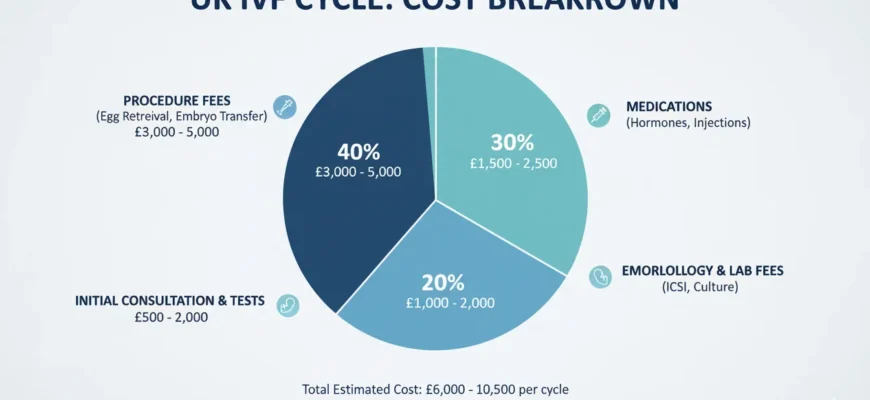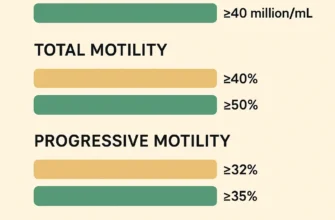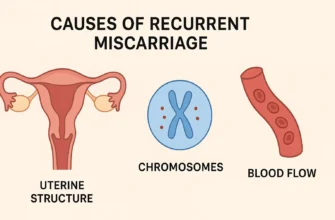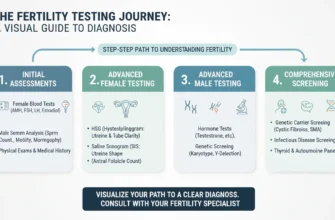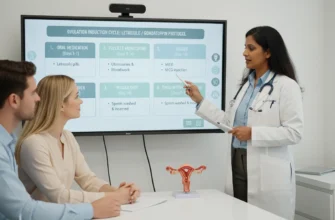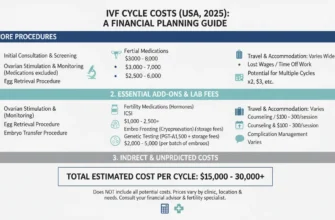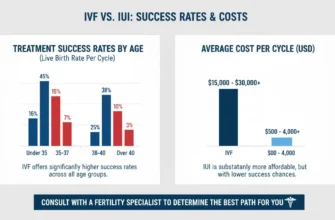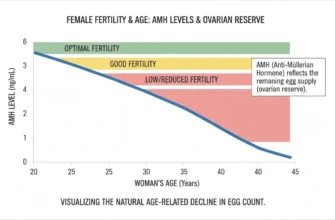IVF Costs UK: A Comprehensive Guide to Average Prices, Full Cycles & Egg Retrieval
IVF in the UK is a multi-stage process with significant financial complexity, where the real cost of a full treatment cycle is often substantially higher than the advertised clinic price. A self-funded IVF journey in 2025 commonly ranges from £7,500 to £13,000 per cycle once medications, essential tests, and additional treatments are included, particularly in private clinics. Understanding the breakdown of costs and package options—as well as incorporating key terms and procedures—equips patients to make informed funding and treatment decisions.
Understanding the Core IVF Treatment Cycle: What’s Included?
A treatment cycle typically advertised as a “package price” often excludes many required essentials, making it vital to grasp what each phase involves and costs.
The Initial Assessment & Diagnostic Tests
The journey begins with a Fertility Assessment Package or initial appointment—including a comprehensive consultation, pelvic ultrasound scan (often a transvaginal or advanced ultrasound scan), and a suite of diagnostic blood tests such as AMH (Anti-Müllerian Hormone), FSH (Follicle Stimulating Hormone), thyroid function test, and ovarian reserve blood test. A semen analysis (or diagnostic semen analysis) for male partners is routine, evaluating sperm count and quality, including screening for Hepatitis B, Hepatitis C, and HIV. Typically, this phase costs between £400 and £600 and is billed separately from core treatment.
Many clinics offer an affordable package for assessment and screening, sometimes branded as a “Fertility Clinic New Patient Team” offer or in the form of a “Fertility assessment package.” For couples, a comprehensive MOT package including both partners’ screening typically costs £475-£595.
Ovarian Stimulation & Monitoring
Patients undergo stimulation medication (injections to encourage multiple egg growth) over approximately 10-14 days, with monitoring scans (often ovarian ultrasound scans) and repeated blood testing to time egg collection. Costs for these appointments may be covered in some packages, but medications (gonadotropins, trigger medication, hormone medication) are a separate expense and a major variable (see below).
Egg Collection (Egg Retrieval Procedure)
Egg retrieval, or egg collection, is performed under sedation or light anesthesia. Costs at this stage usually bundle theatre use, anesthetist, clinician and embryologist time, and lab consumables. The final bill might also include trigger medication fees and any last-minute pre-treatment scans.
Fertilization & Embryo Culture
Collected eggs are fertilized using standard IVF or advanced techniques like ICSI (Intracytoplasmic Sperm Injection) if indicated by sperm quality or count issues—ICSI typically adds £1,000–£1,500. Embryos are cultured in high-tech incubators (blastocyst culture), with naturally progressing embryos sometimes transferred at day 3 or day 5. Some clinics charge more for “extended” blastocyst culture (day 5 transfer). “Embryo glue” may also be offered as a treatment add-on, costing another £200–£400.
Embryo Transfer: Fresh and Frozen Options
Embryo transfer can be carried out as a fresh or frozen embryo transfer (FET) cycle. If you have quality embryos left, freezing incurs extra embryo storage fees (typically £450-£525 initial freezing, plus £175–£450 per year for ongoing storage). Frozen embryo transfer procedures are handled in later, less expensive cycles, typically costing £1,500–£3,000.
Luteal Support, Medications, and Pregnancy Tests
After transfer, luteal support medication (progesterone) is required, supplied as pessaries, gels, or injections. A pregnancy scan or blood/urine test about two weeks later determines the outcome.
Key Inclusion to Note: Screening tests (such as for Hepatitis or thyroid function), pre-treatment scans, and consultations (review or subsequent appointment) are often additional costs—even when not itemized.
IVF Costs in the UK: What to Expect in 2025
Single Fresh IVF Cycle
A typical “headline” private clinic price per cycle ranges from £3,500–£7,000. However, the actual out-of-pocket cost after necessary medications, blood tests, diagnostic scans, advanced embryo culture, or add-ons often exceeds £7,500–£13,000 per completed attempt.
The Queen Mary University of London study (2025) reported that the cost of privately funded fertility treatment ranged from £5,000 to £13,000, with an average expenditure of £11,950 per cycle. Patients who opted for self-funded treatment at NHS facilities faced an average cost of £6,990, while those treated in private clinics reported significantly higher costs, averaging £12,977 per cycle.
Frozen Embryo Transfer (FET) Costs
A subsequent FET after the initial cycle (using previously frozen embryos) costs £1,500–£3,000. Main components are thawing, uterine preparation, and transfer, excluding medications. Annual blastocyst storage or embryo storage must be budgeted for future use at £175-£450 per year.
Medication Costs
Out-of-pocket costs for essential fertility drug treatment typically range from £500–£2,500 per cycle, based on dosage and duration of hormone stimulation. The dose can be higher in older patients or those with low ovarian reserve. King’s Fertility, for example, lists medication cost ranges of £532-£2,485 for IVF cycles and £120-£805 for FET cycles.
Age, Success Rates and Treatment Cycles
Procedural costs remain similar, but higher medication needs (for older or low-reserve patients) inflate expenses. Success rates vary significantly by age:
-
The national average IVF pregnancy rate was 31% per embryo transferred in 2023, increasing to 41% for women aged 18-34
-
The preliminary average IVF birth rate was 25% nationally in 2023, with 35% for patients aged 18-34 and only 5% for patients aged 43-44 when using their own eggs
-
Using frozen embryo transfers, the average pregnancy rate was 39% per embryo transferred and the average preliminary birth rate was 33% in 2023
Many patients should budget for multiple cycles for realistic outcomes. The HFEA noted that “an average fertility patient will go through three embryo transfers”.
IVF Packages: Single, Multi-Cycle, and Refund Plans
Single-cycle package: Lower upfront cost, but no protection if more cycles are needed (must pay again for fresh/frozen cycles or add-ons).
Multi-cycle packages: Two or more cycles at a discounted price, often with bundled inclusions. Some clinics partner with finance providers to offer payment plans.
Refund/guarantee plans: Higher upfront fees (typically £7,000-£20,000), but offer partial or full refund for unsuccessful treatment cycles. These programs typically offer:
-
50%, 70%, or 100% refund if you do not have a baby
-
Available primarily for women aged 39 and under using their own eggs
-
Multiple IVF cycles (typically 3) within a timeframe
Eligibility criteria for refund programs are strict and vary by clinic, with age restrictions and medical requirements. It’s important to note that if you succeed on your first cycle, you may have paid more than individual cycle costs.
Always request a detailed price quote or itemized fee schedule—the majority of clinics provide one upon request.
Costs of IVF Add-ons & Optional Advanced Techniques
Many treatment add-ons are offered, though the HFEA has raised concerns that most lack strong evidence of effectiveness for the majority of patients. According to a 2025 study, 73% of UK IVF patients reported using an add-on during their most recent treatment cycle, with the majority opting for these based on clinic suggestions.
| Treatment Add-on | Typical Cost (per cycle) |
|---|---|
| ICSI (single sperm injection, male factor) | £1,000 – £1,500 |
| Blastocyst culture (extended embryo culture) | £400 – £800 |
| Embryo glue | £200 – £400 |
| Embryo/Sperm freezing (initial) | £400 – £525 |
| Annual embryo/sperm storage | £175 – £450 |
| Preimplantation Genetic Testing (PGT-A) | £870 – £3,750 (package) |
| PGT-M (for specific genetic conditions) | £2,870 – £5,695 |
| PGT-SR (for chromosomal rearrangements) | £1,810 – £5,700 |
| ERA (Endometrial Receptivity Array) | £1,120 – £1,400 |
| EmbryoScope/Time-lapse imaging | £750 – £1,150 |
| Assisted hatching | £450 – £550 |
Egg sharing/egg donation/recipient treatment: Offers discounted cycles for those donating eggs, but strict eligibility criteria apply.
HFEA Add-ons Rating System: The HFEA has developed a traffic-light rating system (with five categories as of October 2023) to help patients assess the evidence base for treatment add-ons. Concerningly, the most commonly used add-on is time-lapse imaging (41.4% of respondents), despite current HFEA assessments confirming it does not improve success rates for most patients.
Hidden, “Non-Clinic” IVF Costs
Time off work: Many appointments needed, often during working hours. Some cycles require up to 10–15 clinic visits.
Travel and accommodation: Additional cost for those outside major cities or far from a licensed clinic or satellite clinic.
Psychological support: Invaluable due to emotional stress. Many opt for extra private counseling sessions beyond the initial free sessions offered by clinics.
Lifestyle and nutritional support: Acupuncture, nutritionist consultations, prenatal supplements—all at added patient expense.
Funding IVF: NHS Versus Private and Alternatives
NHS IVF
NHS IVF eligibility involves strict criteria for BMI, age, existing children, smoking status, and success history. Offered cycles and funding vary significantly by region through Integrated Care Boards (ICBs) in England.
Key eligibility criteria commonly include:
-
Age: Women typically must be aged 23-42 years, though some regions restrict full cycles to women under 39
-
BMI: Women typically need BMI between 19-30
-
Smoking status: Both partners generally required to be non-smokers
-
Existing children: Over 76% of ICBs in England only fund IVF if neither partner has living children
-
Duration of trying: Typically 2-3 years of unexplained subfertility required
-
Previous IVF: Many areas will not fund treatment if you’ve had previous private IVF
-
AMH levels: Often required to be above 5.4 pmol/l
NHS Funding Decline: The average proportion of NHS-funded IVF cycles declined from 35% in 2019 to 27% in 2023 across the UK. Regional variations in 2023 ranged from 54% in Scotland to 24% in England.
Waiting times: According to NHS guidance, most people wait 6 to 12 months for NHS IVF, including time for referrals, tests, and starting treatment. However, depending on the area, couples can wait anywhere from a few months to up to three years to start fertility treatment. In Scotland, waiting times are monitored against a 52-week standard, with most patients screened within this timeframe as of June 2025.
Private Treatment
Private treatment is dominant for those ineligible for NHS-funded care or seeking faster access. Some patients obtain private health insurance, employer fertility benefits, or seek finance/loans via specialist lenders. Shared risk or sperm/egg sharing packages offer further ways to help cover costs.
Common Fertility-Related Terms to Know
Core Treatment Terms: Embryo transfer, blood tests, egg collection, fertility treatment, ultrasound scan, semen analysis, treatment cycle, frozen embryos, frozen embryo transfer, monitoring scans, pregnancy scan, sperm injection, additional costs
Advanced Options: Donor sperm, blastocyst culture, intrauterine insemination (IUI), success rates, egg donation, egg sharing, fresh embryo transfer, embryo culture, fertility clinic, single cycle, embryo glue, sperm donor, screening tests, fertility tests, stimulation medication, treatment add-ons, additional treatments, embryo storage, overseas clinic
Specialized Procedures: ICSI, PGT-A, PGT-M, PGT-SR, ERA test, EMMA test, endometrial scratch, assisted hatching, time-lapse imaging (EmbryoScope)
Administrative Terms: Price list, review consultation, detailed treatment plan, quality embryos, sperm sample, majority of clinics, luteal support medication, trigger medication, initial appointment, fertility assessment package, patient portal, treatment consultation, treatment options, patient support team, licensed clinic, satellite clinic, subsequent appointment, cancellation fees
Medical Assessments: Hepatitis B, Hepatitis C, HIV screening, hormone treatment, thyroid function test, diagnostic blood tests, ovarian reserve blood test, AMH (Anti-Müllerian Hormone) blood test, sperm quality, normal sperm count, single sperm, diagnostic semen analysis
Storage & Preservation: Annual blastocyst storage, embryo freezing, sperm freezing, annual semen storage, cryopreservation, egg freezing
Treatment Outcomes: Baby from fertility treatment, common treatment, fertility treatment outcomes, successful treatments, unsuccessful treatment, births per embryo transferred, average success performance, key success measures
Conclusion: Empowered Financial Planning for IVF
To manage the cost of fertility treatment and its emotional toll, patients should:
-
Request a truly detailed price quote for all potential costs, clearly indicating what is and isn’t included per treatment option. Be aware that advertised prices are typically 36% lower than actual costs, and in London, the markup can be as high as 57%.
-
Obtain a tailored estimate for stimulation medication and all other required drugs, as these can vary significantly from £500 to £2,500 per cycle.
-
Critically evaluate add-ons and their scientific benefit with your clinical team. Consult the HFEA’s traffic-light rating system and be aware that 73% of UK patients used add-ons in 2025, though most lack strong evidence for the general patient population.
-
Factor in varied costs beyond the clinic: time off work, travel, emotional support through counseling, and lifestyle changes.
-
Explore all funding options: NHS eligibility (though only 27% of cycles were NHS-funded in 2023), multi-cycle packages with discounts, refund guarantee programs (typically £7,000-£20,000 for 3 cycles with up to 100% refund), patient support team assistance, or employer benefits.
-
Understand success rates realistically: With a 31% national pregnancy rate and an average fertility patient going through three embryo transfers, budget for potential multiple cycles.
-
Be aware of information sources: The 2025 Queen Mary study found that while 96% of respondents consulted private fertility clinic websites, trust varied significantly, with only 60.2% finding private clinic websites reliable. Cross-reference information from multiple trusted sources including the HFEA website.
Having a comprehensive, itemized financial plan—understanding that total costs typically range from £7,500 to £13,000 per cycle including all essentials—enables patients to focus resources and attention on their most important goal: a successful IVF journey and building their family.

